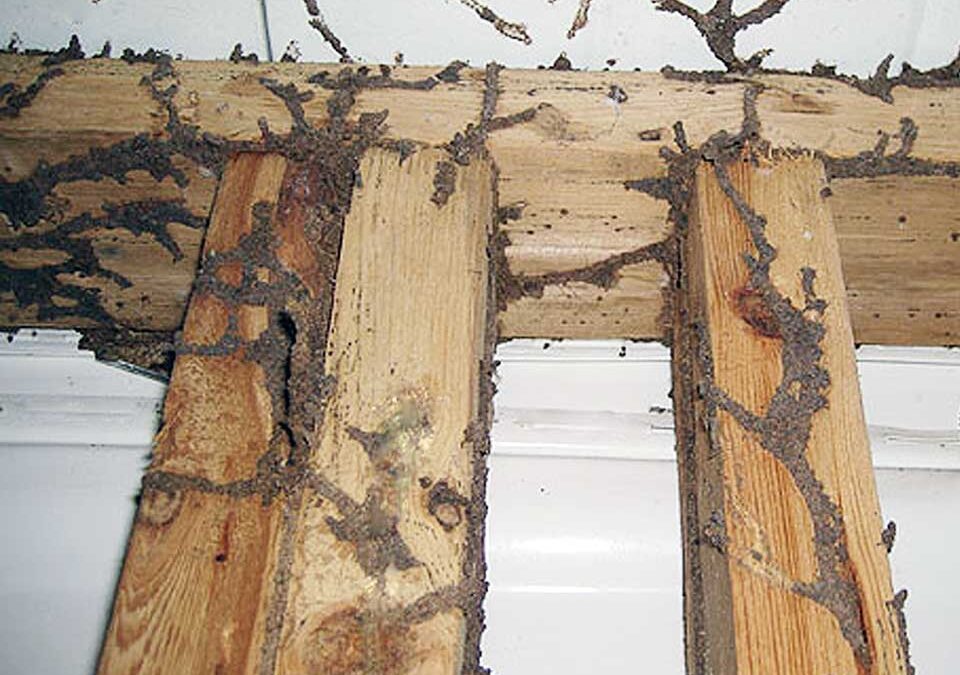The question is, how far can termites travel? Termites can travel varying distances depending on the species, colony size, and food availability, but subterranean termites, the most common home invaders, can forage up to 200-300 feet from their nest, sometimes even further. This makes understanding their behavior crucial for protecting your property. This article explores the distances termites travel, factors influencing their reach, and how to safeguard your home.

Image Source: www.chemfreeexterminating.com
What Determines Termite Travel Distance?
Several factors dictate how far a termite colony will venture in search of sustenance. These influence the termite foraging range and ultimately affect your property’s vulnerability.
Termite Colony Size and Distance
Larger termite colonies need more food to sustain their population. Consequently, a larger colony will often have a greater termite territory size and a longer termite foraging range. A mature colony can contain millions of termites, necessitating an expansive search area.
Species Matters
Different termite species exhibit varying foraging habits. Subterranean termites, for example, build tunnels to access food sources, allowing them to travel considerable distances. Drywood termites, on the other hand, live within the wood they consume and typically don’t travel far.
| Termite Species | Average Foraging Distance | Habitat |
|---|---|---|
| Subterranean Termites | Up to 300 feet or more | Soil, connecting to wood |
| Drywood Termites | Very limited | Inside wooden structures |
| Dampwood Termites | Limited | Moist, decaying wood |
Food Availability
The availability of food significantly impacts the distance termites travel. If a readily accessible food source is nearby, termites may not need to venture far. However, if resources are scarce, they will extend their search. Distance termites travel for food is directly related to how easy food is to find.
Environmental Conditions
Moisture, temperature, and soil composition affect termite activity. Favorable conditions encourage termites to explore further, while harsh conditions may restrict their movement.
Subterranean Termite Foraging Distance: A Closer Look
Subterranean termites are a major threat to homes. Their behavior and capabilities are crucial to know.
Tunnel Systems and Exploration
Subterranean termites create extensive tunnel systems to explore their surroundings. These tunnels protect them from predators and desiccation, enabling them to travel considerable distances from their nest.
Maximum Travel Distance
While the typical subterranean termite foraging distance is up to 300 feet, under optimal conditions and with a large colony, they can travel even farther. Some studies suggest they might even reach distances of over 450 feet.
How Far Do Termites Roam From the Main Nest?
The active foraging area for a colony is defined by the termite activity radius. The center of this activity is usually the main nest. The distance that individual termites roam from this nest can vary greatly. Scouts are known to venture further than workers involved in continuous transport.
Signs of Termites Far From Your House
Detecting termites early is crucial. Look for these signs of termites far from house to take preventive measures.
Mud Tubes
Mud tubes are a telltale sign of subterranean termites. These pencil-sized tubes provide termites with a protected pathway to reach food sources above ground. Finding these on foundation walls, near trees, or along fences suggests termite activity.
Wood Damage
Wood that sounds hollow when tapped or crumbles easily can indicate termite damage. Look for signs of damage in areas away from your house, such as sheds, fences, and wooden landscaping features.
Swarmers
Swarmers are winged termites that emerge from the colony to mate and establish new colonies. Spotting swarmers, even at a distance from your home, suggests that a termite colony is nearby. Termite dispersal range can extend beyond your immediate property.
Frass
Drywood termites produce fecal pellets known as frass. Finding small piles of frass near wooden structures indicates termite activity. This is especially important to note even if the wooden structure is on the perimeter of your yard.
Protecting Your Home from Termite Invasion
Understanding termite behavior is the first step. Implement the following strategies to safeguard your property:
Soil Treatment
Applying a termiticide to the soil around your home creates a barrier that prevents termites from entering. This treatment is effective in deterring subterranean termites.
Baiting Systems
Termite baiting systems involve placing bait stations around your property. Termites consume the bait and carry it back to the colony, eventually eliminating the entire population.
Wood Treatment
Treating wooden structures with borate-based products can make them resistant to termites. This is particularly useful for protecting decks, fences, and other outdoor wooden features.
Regular Inspections
Schedule regular termite inspections with a qualified pest control professional. Early detection is crucial for preventing extensive damage.
Eliminate Moisture Sources
Termites thrive in moist environments. Repair leaky pipes, improve drainage, and ensure proper ventilation in crawl spaces to reduce moisture levels around your home.
Remove Wood-to-Soil Contact
Eliminate any wood-to-soil contact, such as wood piles or mulch against your foundation. This provides termites with easy access to your home.
Monitor Trees and Stumps
Pay attention to any trees or stumps on your property, as these can serve as termite harborage areas. Remove dead or decaying wood and monitor for signs of termite activity.
Case Studies: Termite Travel and Infestation
Real-world examples highlight how far termites can travel and the consequences of neglecting termite control.
Case Study 1: Suburban Home Infestation
A homeowner in a suburban neighborhood noticed mud tubes on their fence, located approximately 150 feet from their house. A professional inspection revealed that a large subterranean termite colony was nesting in a nearby tree stump. The termites had traveled from the stump, across the yard, and infested both the fence and the home’s foundation. The homeowner incurred significant repair costs due to the extensive damage.
Case Study 2: Rural Property Damage
A property owner in a rural area discovered signs of termite damage in their barn, situated approximately 250 feet from their house. The termites were traced back to a large colony nesting in a decaying wood pile behind the barn. The termites had traveled through the soil to reach the barn, causing substantial structural damage.
These case studies illustrate the importance of vigilance and proactive termite control measures, even at a distance from your primary residence.
Fathoming Termite Behavior
Grasping how termites behave offers vital insights into what attracts them.
Food Sources
Termites are drawn to cellulose, the main component of wood. They also feed on other materials containing cellulose, such as paper, cardboard, and fabrics.
Moisture
Termites need moisture to survive. They are attracted to damp environments, such as those created by leaky pipes, poor drainage, and excessive humidity.
Shelter
Termites prefer dark, protected environments. They build nests in soil, wood, and other concealed locations, where they are shielded from predators and the elements.
What To Do If You Suspect Termites
If you suspect termites on your property, take these steps:
- Do Not Disturb: Avoid disturbing the termites or their tunnels, as this can cause them to relocate and make detection more difficult.
- Professional Inspection: Contact a qualified pest control professional to conduct a thorough inspection of your property.
- Treatment Options: Discuss treatment options with the pest control professional and choose the most appropriate method for your situation.
- Preventive Measures: Implement preventive measures to protect your home from future infestations.
- Monitor Regularly: Continue to monitor your property for signs of termite activity.
FAQ
- What is the average lifespan of a termite colony? A termite colony can live for many years, even decades, depending on the species and environmental conditions.
- Can I treat termites myself? While some DIY treatments are available, professional termite control is usually necessary for effective elimination and prevention.
- How often should I have my home inspected for termites? It is recommended to have your home inspected for termites at least once a year.
- Are termite infestations covered by homeowners insurance? Termite damage is typically not covered by homeowners insurance, as it is considered a preventable maintenance issue.
- What attracts termites to my yard? Moisture, wood-to-soil contact, and readily available food sources attract termites to your yard.
- Are there certain plants that repel termites? Some plants, such as marigolds and catnip, are believed to repel termites, but their effectiveness is limited.
By understanding how far termites can travel and the factors that influence their behavior, you can take proactive steps to protect your home from costly damage. Vigilance, preventive measures, and professional assistance are essential for ensuring a termite-free environment.

Hi, I’m Candace Wafford, a travel and food blogger based in Lexington, Kentucky. As a corporate traveler, I’ve had the chance to explore a lot of places, but now I’m on a mission to travel full-time. My goal? To figure out how to take my cat along for the adventure! Here at destinationdorworth.com, I share my experiences and tips on outdoor activities, travel, and of course, the best food spots I come across. I hope my blog inspires you to explore more and eat well on your journeys!
